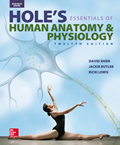1 A) taste cell B) taste pore C) taste hair D) taste cell membrane 2 A) increasing the sensitivity of taste receptors B) dissolving the chemicals that cause taste so they can be tasted C) releasing taste factors by partially digesting food D) capturing and dissolving the gases of odors of food 3 A) sugar B) pretzels C) a lemon D) monosodium glutamate (MSG) 4 A) provide a framework for the tympanic membrane B) protect the structures of the inner ear C) support the structure of the tympanic cavity D) relay and amplify the vibrations and transmit them to the inner ear 5 A) stapes B) malleus C) incus D) incubus 6 A) Spiral organ (organ of Corti) B) scala vestibuli C) scala tympani D) round window 7 A) ampulla B) cupula C) semicircular canals D) maculae 8 A) macula B) semicircular canal C) vestibule D) utricle 9 A) crista ampullaris B) macula C) endolymph D) cerebellum 10 A) orbicularis oculi B) superior rectus C) levator palpebrae superioris D) ciliary muscle 11 A) upward and toward the midline B) downward and toward the midline C) upward and away from the midline D) downward and away from the midline 12 A) lacrimal gland, superior and inferior canaliculi, lacrimal sac, nasolacrimal duct B) superior and inferior canaliculi, lacrimal sac, nasolacrimal duct, lacrimal gland C) lacrimal sac, superior and inferior canaliculi, lacrimal gland, nasolacrimal duct D) lacrimal gland, nasolacrimal duct, lacrimal sac, superior and inferior canaliculi 13 A) the nature of the cytoplasm in the cells of the cornea B) the small number of cells and the lack of blood vessels C) a lack of nuclei within the cells of the cornea D) keratinization of cells in the cornea 14 A) accommodation B) refraction C) reflection D) strabismus 15 A) ciliary body B) fovea centralis C) optic disk D) choroid coat 16 A) sclera B) middle layer C) cornea D) vitreous humor 17 A) colorless vision - rods B) fovea centralis - cones C) cones - rhodopsin D) sharp images - cones 18 A) True B) False 19 A) True B) False 20 A) True B) False 21 A) True B) False 22 A) True B) False 23 A) True B) False 24 A) True B) False 25 A) True B) False 26 A) True B) False 27 A) True B) False 28 A) True B) False 29 A) True B) False





